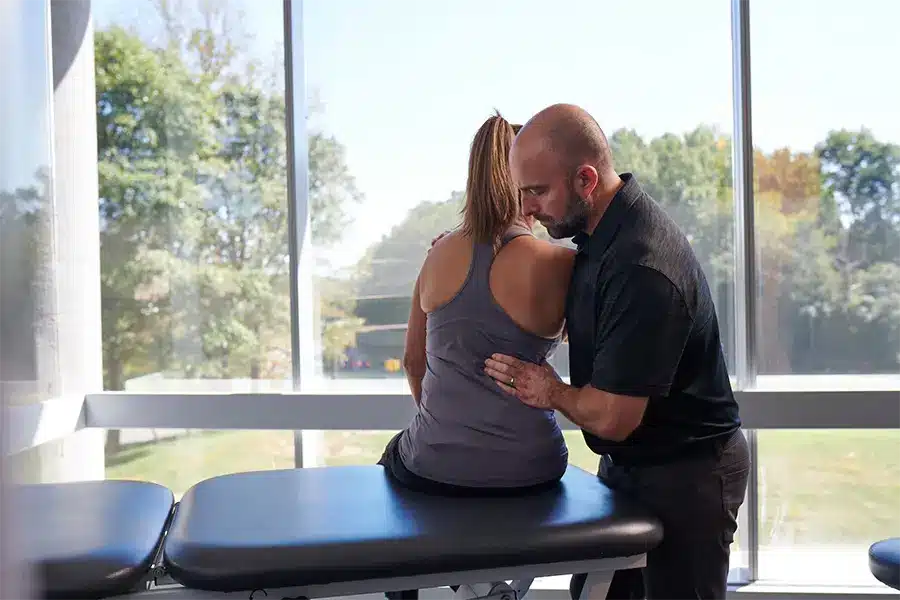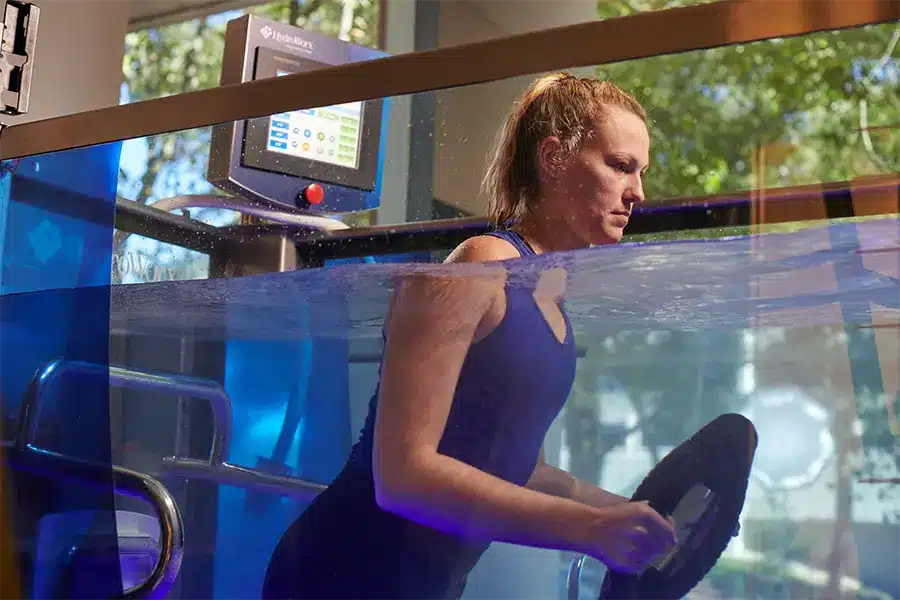
Treating a Herniated Disc With Physical Therapy
Living with a herniated disc can be overwhelming, and many patients worry about the long-term impact on their mobility and quality of life. Common questions and concerns for those living with a herniated disc include:
- Will my pain ever go away?
- Do I need surgery to fix my herniated disc?
- Can I continue my daily activities without making it worse?
- What are the best non-surgical treatment options?
Herniated discs can be managed without surgery, and physical therapy plays a crucial role in pain relief and recovery. Understanding the condition and available treatment options can help patients make informed decisions about their health.
Understanding Herniated Discs
A herniated disc, also known as a slipped, bulging, or ruptured disc, is usually the result of repeated stress and injuries to the annular layers of an intervertebral disc, causing the inner material of the disc to rupture outward beyond the outer disc layer. This can compress nearby nerves, leading to pain, numbness, tingling, or muscle weakness.
Can a Herniated Disc Heal Without Surgery?
Yes! Physical therapy and other non-surgical interventions can help a herniated disc heal naturally by:
- Reducing inflammation to relieve pain and pressure on nerves.
- Improving mobility and strength to prevent further injury.
- Correcting posture and movement patterns for long-term spine health.
For severe cases where conservative management fails, regenerative medicine or minimally invasive spine surgery may be necessary. While most patients respond well to non-surgical treatments, consulting with a specialist can help determine the best approach for a long-term solution.
Does Physical Therapy Help with a Herniated Disc?
Physical therapy plays a crucial role in relieving pain, improving mobility, and supporting recovery from a herniated disc. While not all herniated discs shrink in size, therapy can significantly reduce symptoms and improve overall function. It also helps decrease inflammation, restore movement, and retrain the body for long-term spine health. If you work out regularly, check out our exercise tips to help prevent disc herniation at the gym.
What Physical Therapy Is Good for a Herniated Disc?
This is a tricky question to answer, as many people have different symptom presentations from a herniated disc. Herniated discs often are caused by overloading the spine beyond its limits. There is often a degree of disc degeneration and adjacent spinal joint issues that accompany a herniated disc. Selecting the right herniated disc physical therapy program depends on symptom severity and underlying biomechanical issues. Since herniated discs often result from spinal overload, addressing postural imbalances and movement deficiencies is critical.
Patients often ask, “Are back extensions good for a herniated disc?” In short, back extension exercises that are tailored to the patient’s specific needs can provide a strong foundation for a herniated disc rehabilitation program, especially in cases of acute disc herniation. However, good physical therapy will also address adjacent areas that have poor movement patterns that contributed to the disc herniation in the first place.

Evidence supports the use of manual therapy techniques to decrease pain and improve deficits in patients with herniated discs. This includes joint mobilizations to the lumbar spine, thoracic spine, and hip, nerve glides to the lower extremity, soft tissue mobilization, and dry needling.
The evidence also supports the use of various forms of therapeutic exercise to improve muscular strength, flexibility, endurance, pain, and disability. This includes trunk coordination, core stability, resistive exercise, strength training, endurance training, and cardiovascular training, all of which are progressive in nature. Initial exercises should be aimed at moving into the motions that are more tolerable. As healing occurs, inflammation decreases, and symptoms improve, the exercises should progress into movements that were more challenging at the beginning of your treatment.
How Long Does a Disc Herniation Take to Heal?
The healing timeline for a herniated disc varies depending on the severity of the injury, the presence of nerve involvement, and the consistency of treatment. Mild to moderate cases typically heal within 6-8 weeks with proper physical therapy, while more severe cases, particularly those involving nerve compression, may take several months to a year. Intervertebral discs primarily consist of water, Type I collagen, and Type II collagen, which influence healing times. Since collagen repair is a gradual process, promoting an optimal healing environment through inflammation control, proper movement mechanics, and targeted exercises can accelerate recovery. Early intervention and adherence to a structured rehabilitation program can lead to symptom improvement within 2-4 weeks, though full recovery often requires more time, particularly in chronic cases. Additionally, effective physical therapy should address not only the herniated disc but also adjacent spinal segments and nearby joints such as the thoracic spine, hips, knees, and ankles to ensure a comprehensive recovery.
Hear from our patient, Chris, on how Dr. Good and the VSI team helped him overcome his back pain without surgery.
Is walking good for a herniated disc?
Yes, walking is an excellent physical activity for a herniated disc as long as walking does not repeatedly inflame the symptomatic area. The human body is built to move and walking is a natural functional movement. The goal is to keep the human body moving and functioning at the highest level without causing additional pain or inflammation. Patients often ask how much they should walk with a herniated disc. My rule of thumb is to have all patients continue moving and working out as long as their pain does not increase by more than 2 points out of 10 in one of three categories: 1) Increase during the activity, 2) increases after the activity, or 3) increases the next day.
The activities that are restricted in the beginning, because they cause pain and inflammation, will become therapeutic once the body is trained to take on stress more successfully with proper strengthening and physical therapy.
In general, herniated discs occur in the posterolateral direction (think back left or back right when looking at a disc from above) and the mechanism that typically cause a disc herniation is spinal flexion with rotation on a loaded spine (e.g. bending over and twisting to pick up a box). Therefore, flexion movements will typically increase symptoms associated with a herniated disc. An activity like walking places the spine in general extension (unless you are walking uphill), and therefore, should be a good activity for individuals presenting with a HNP.
What exercises are bad for a herniated disc?

As mentioned above, most HNPs occur in the posterolateral direction and are caused by flexion and rotation under load movements. Therefore, any movements or exercises that mimic this position or place the spine into flexion (bending forward) should be avoided IF they increase your symptoms. Therapeutic exercise is typically aimed at initially moving into positions that the patient can tolerate while the HNP takes its time to heal, this is called directional preference. Therefore, movements or exercises that cause pain should be avoided initially and progression into those aggravating movements will occur as symptoms and deficits improve.
If you’re considering physical therapy for herniated discs, VSI Physical Therapy’s licensed orthopedic physical therapists employ modern techniques to maximize your recovery and results. Manual physical therapy, aquatic therapy, and more are available.
Expert Physical Therapy for Herniated Disc Recovery
If you’re searching for effective physical therapy for a herniated disc, VSI Physical Therapy offers customized treatment programs, expert therapists, and on-site physicians to guide your recovery. Book a consultation today to start your path to a pain-free, healthier spine!
Topics covered
About the Author
Featured Resources
Insights to Achieve a Pain-Free Life



